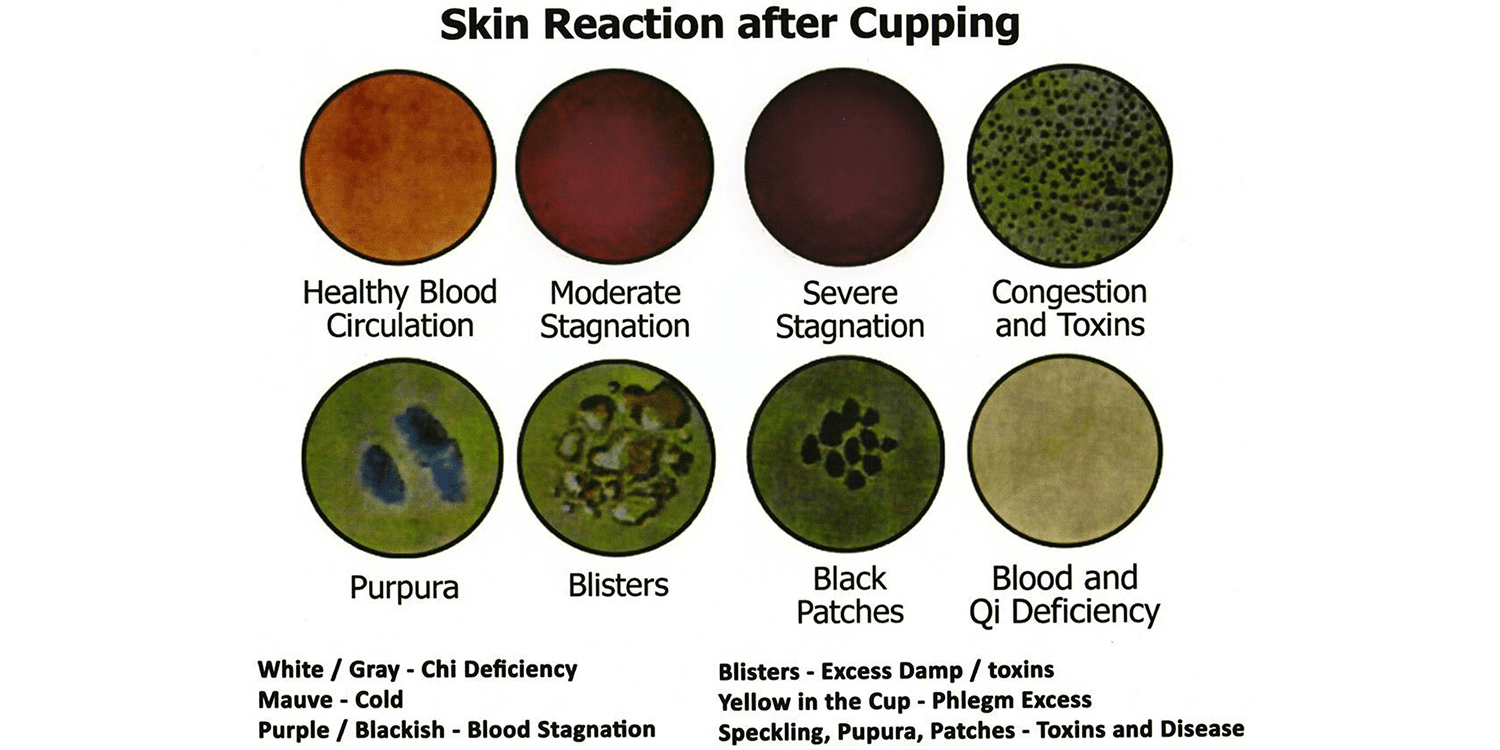When circulation is sluggish or compromised in an injured or diseased area of the body, insufficient oxygen gets to the cells, and there will be a local build-up of waste products. When the skin is pressed, the blanching that occurs is slow to fade.
The color and pattern of the marks depend on the level of stagnation in the area, and range from a bright red to dark purple, usually lasting three days to a week. Sometimes longer if the person is very sick or sedentary. If there is no stagnation present, there will be only a light pink mark which disappears in a few minutes to a couple of hours. Sites where there is old trauma or injury may require multiple cupping sessions to remove all stagnation. You will find in follow up sessions the marks will be visibly lighter and lighter as the pathogens are systemically removed from the body.
Suction pulls toxins, pathogenic factors, dead lymph and cellular debris from deep within the tissues to the surface. These debilitating agents are then more easily expelled from the body. The deposits dissipate from a few hours up to several weeks, depending on the amount of stagnation and the patients post treatment activities.
The quality of the pathogenic factors varies according to the severity of the patient’s blood stasis—which correlates with the nature, severity and type of condition they have.
These are all results of disease and toxins being removed from deep within the tissues.
The more discoloration that surfaces – the greater level of stagnation and toxicity needed to be purged from the body. Usually, I will see the greatest amount of deposits being drawn to the surface in the first few sessions – this is a good thing. The deposits will lessen in intensity as the deeper tissues are resolved and the stagnations and toxins have been dredged up and flushed out via the body’s own circulatory systems, expulsion from the pores and sweat. Sweating is a great after treatment follow up for clients to help get rid of the garbage you have released.
Although the marks look painful, they are not. Clients usually feel an immediate sense of relief.

Blisters on Skin:
They are bubbles that pop up when fluid collects in pockets under the top layer of your skin. They can be filled with pus, blood, or the clear, watery part of your blood called serum. Most are shaped like circles. Depending on the cause, your blister could itch or hurt a lot or a little. They can appear as a single bubble or in clusters.This usually happens with people having a greasy skin; such patients release lesser blood & may need deeper incisions for a good drainage.
With the very first incision, a good Hijamah/Cupping therapist should be able to predict skin’s condition.
For such patients (oily skin), suction should not be very tight; and if the patient is not draining enough blood, cups should be removed after 5 minutes & applied on other areas. This technique will prevent the formation of blisters.







